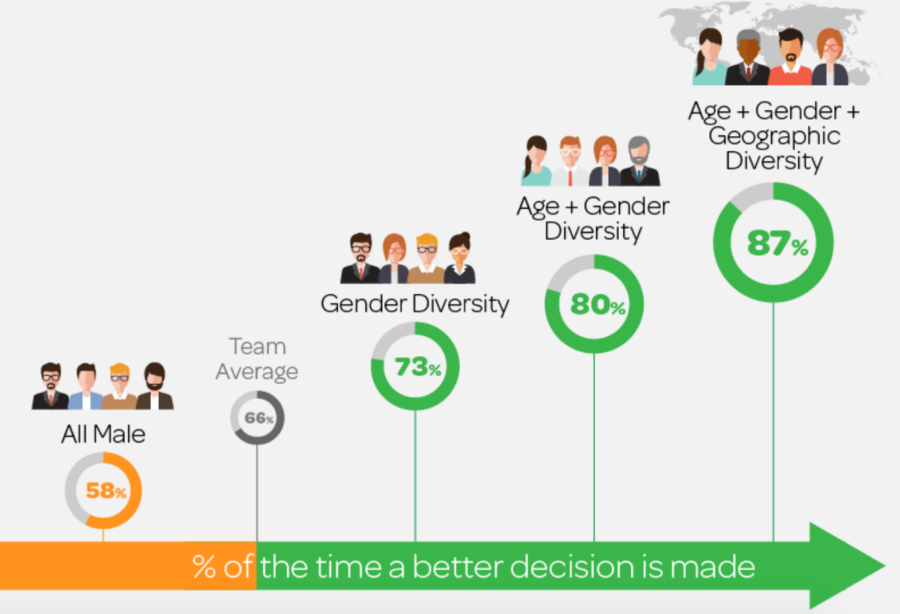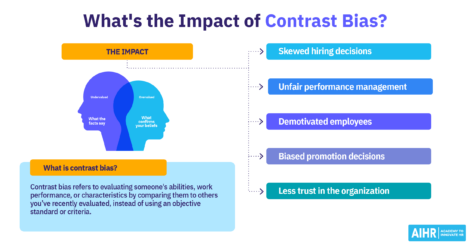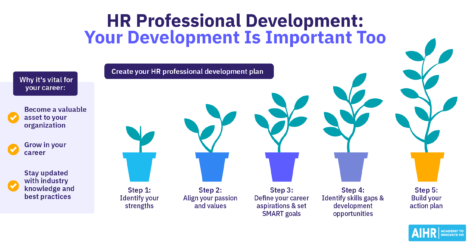Why We Should Embrace Generational Differences in the Workplace

Are generational differences in the workplace a thing or not? Some say they most definitely are, others say they’re an absolute myth.
In this article, we’re going to take a look at the current generational diversity in the workplace; what generations make up the global workforce, how do they perceive work and how can organizations benefit from generational differences in the workplace?
What’s in?
The Silent Generation (born before 1946)
Baby Boomers (born between 1946 and 1964)
Gen X (born between 1965 and 1980)
Gen Y (born between the early ’80s and mid-’90s)
Gen Z (born between 1996 and 2012)
How can organizations benefit from generational differences in the workplace?
The benefits of generational diversity
Wrapping up
Generational diversity in the workplace today
Roughly speaking, there are five generations in the workplace today:
- The Silent Generation
- Baby Boomers
- Gen X
- Gen Y
- Gen Z
By 2030, the largest part of the US workforce will (still) consist of Millennials.
The Silent Generation (born before 1946)
The Silent Generation, also known as the Traditionalists, refers to people who were born somewhere between 1925 and 1945. In case you’re wondering why this generation is being referred to as ‘silent’, it’s because back in the day children were expected to be seen rather than heard (in other words, to do as they were told and be good).
While we don’t hear as much about this demographic cohort in the workplace, which makes sense given their age, they’re commonly attributed the following characteristics:
Hardworking
This is the generation that grew up during the Great Depression and World War II. They think of work as a privilege and are known for their strong work ethic.
Strong willpower
A logical consequence from growing up – and having to survive – in particularly hard times.
Loyal & respectful towards authority
Traditionalists have often stayed with the same employer throughout their entire careers. They do, however, expect the same loyalty from their employers.
As the name ‘Silent Generation’ implies, people from this cohort learned to respect authority and value conformity.
Where do we find Traditionalists in the workforce?
Many traditionalists will be (partly) retired by now. Those who are still active often find themselves in consulting, partner or, for instance, senior support roles. To get an idea about the variety of work traditionalists can do check out our article about the 13 best jobs for older workers.
Baby Boomers (born between 1946 and 1964)
Logically, the Baby Boomers are those who follow after the Silent Generation. Unlike their predecessors, a lot has been written about this cohort. Common characteristics include:
Goal-oriented
Boomers had more opportunities than previous generations in terms of education and finances which makes them more achievement-oriented and career focused.
Competitive
Baby Boomers tend to be very hardworking and often define themselves by their professional accomplishments. As such, they are rather competitive in the workplace and believe in a hierarchal structure.
Value relationships
This generation greatly values human relationships. While growing up, Boomers used to make phone calls and write letters, hence strengthening their interpersonal skills. While they use cell phones and tablets, they mostly use them as productivity tools (instead of connectivity tools).
Where do we find Baby Boomers in the workplace?
Where can’t we find them, probably is a better question. While Boomers are a rapidly increasing part of the aging workforce, in the European Union alone, mature workers make up for 16% of the total workforce.
In countries like Germany, Finland, and Sweden the number of workers aged 55+ is even close to one in five. In other words: people from this cohort are active across all industries and in countless different roles.
Gen X (born between 1965 and 1980)
As a result of a period of birth decline after the baby boom, generation X is considerably smaller than the previous cohort. They also tend to be more ethnically diverse and better educated than the Boomers. Characteristics include:
Flexible
Just like Gen Z saw their parents struggle following the financial crisis of 2008, Gen X saw their parents suffer during the economically tough times in the 80s; this is one of the reasons they are less committed to a single employer and adapt well to change.
Work hard, play hard
Generation X was the first cohort to put a bigger emphasis on the much-talked-about work/life balance. Work is important, certainly, but they prefer working to live rather than the opposite.
Individualistic
Gen X grew up in a time when two-income families were on the rise. Women increasingly started to join the workforce creating a generation of so-called latchkey kids. As a result, Gen X is pretty independent, self-sufficient and resourceful.
Where do we find Gen X in the workplace?
While Gen Y may outnumber Gen X as the largest percentage of the workforce, it goes without saying that Generation X still has an undeniable impact across the global workforce.
Gen Y (born between the early 80’s and mid 90’s)
Now, if there is one generation that’s been written and talked about countless times, it’s this one. Generation Y – often referred to as Millennials – is currently the largest cohort in the workforce, comprising 35% of all employees. Among a long list of ‘characteristics’ we find:
Value collaboration & teamwork
While their predecessors can be rather individualistic and competitive, Gen Y values collaboration and teamwork.
They change jobs (often)
Where previous generations thought of proving their worth and ‘putting in the hours’ as a way of moving up the corporate ladder, Millennials think of applying to new jobs as the most efficient way to advance.
But finding a company that fits their personal values and offers them the ‘right’ job are also reasons Millennials change jobs more often.
Salary isn’t everything
As a logical consequence from the above, not all Millennials think of salary as their number one priority. The total package including various types of employee benefits, perks, personal development opportunities and, of course, the right job, matters more than the money alone.
Where do we find Gen Y in the workplace?
Being the largest cohort in the workforce today, Millennials literally fill all sorts of roles across all industries. While a lot of them work in the ‘classic’ corporate world, many have also joined one of the countless (tech) startups.
Gen Z (born between 1996 and 2012)
The youngest among our five generations in the workplace is Generation Z, also known as the iGeneration or Digital Natives. Time to meet generation Z in a few characteristics:
Tech-savvy
More than any other generation in the workplace, Gen Z has no difficulty what so ever using the latest apps, technology, or platforms; it’s what they do.
They value (job) security
As we mentioned before, this is another generation that saw their parents suffer the consequences from a major financial crisis. As such, they want a job that provides them with a secure (personal) life and they appreciate financial wellness benefits such as advice about loans and savings.
They are autonomous
Whenever a Digital Native encounters a real-life issue, they search for a solution online. With the help of a YouTube or other guide they tend to solve a lot of issues themselves.
Where do we find Gen Z in the workplace?
With most of Generation Z currently being somewhere between the age of 7 and 23, many of them have just started to enter the workforce. Therefore they often find themselves in entry-level or internship positions or graduate programs. But young, self-made Instagram, YouTube or other online entrepreneurs are no exception either!
What comes after Generation Z?
How can organizations benefit from generational differences in the workplace?
benefit from generational differences in the workplace.
Now, onto the benefits of age diversity in the workplace and how organizations can benefit from generational differences in the workplace.
I believe by now we’ve established that there definitely are some differences between the generations; The mere fact that each cohort was born in a different political and economic climate, each with its own challenges and (technological) developments implies that we look at the workplace through a different lens.
And that’s a good thing, really.
The benefits of generational diversity
It drives innovation
A study by Forbes Insights among more than 300 large, global companies shows that diversity is a key driver of innovation. A diverse set of experiences, perspectives, and backgrounds is essential for innovation and the development of new ideas.
Skill diversity
We already mentioned how Baby Boomers used to make phone calls and write letters to build relationships and how this strengthened their interpersonal skills. Younger generations tend to have stronger digital skills.
The beauty of a multigenerational workforce lies in the fact that every generation brings a different set of skills to the table. Often, these skills will be complementary which creates a great opportunity for intergenerational team bonding.
Having multiple perspectives
Thanks to their different ways of thinking about the world – and the workplace – each generation will have a distinct thought process. A multigenerational workforce will, therefore, be a source of various perspectives on every subject and idea that comes up.
Not only does this make your organization more appealing to a much broader customer demographic, but it also makes you more appealing to a broader candidate demographic.
Two heads are clearly better than one. But two different heads are ultimately better
than two that simply think the same, research has found.
Future-proofing your workforce
Many organizations are thinking about future-proofing their workforce. And rightly so: we’ve got a rapidly digitalizing world, heaps of people hitting retirement and a recruitment market that is largely candidate-driven.
The good news is, this situation is a great example of how organizations can benefit from generational differences in the workplace.
Having a multigenerational workforce enables companies to launch initiatives like a two-way mentoring program. Mature talents can share their knowledge, experience, and skills with younger generations and vice versa.
This kind of mentoring, especially when part of a sound strategic workforce planning, can ensure the transfer of crucial skills. The benefit is twofold. On the one hand, you’ve got a group of younger employees fully equipped to take over when the time comes. On the other hand, you may be able to keep on your mature talents (part-time) because they enjoy their new role as company mentor.
A competitive advantage
Something that can be deducted from the above is that a multigenerational workforce gives you a competitive advantage. Having multiple generations working in your organization makes you more attractive both for a wider audience of potential customers and candidates.
In a time where diversity on a gender, ethnical and age level is a hot topic, being a multigenerational employer is definitely a plus.
Better performance and productivity
According to an executive briefing by the SHRM Foundation, research shows that generational diversity can improve organizational performance and that HR practices that improve the age diversity climate in a company can potentially further improve that performance and reduce employee turnover.
According to the same briefing, both older and younger workers are more productive in companies with mixed-age work teams.
Wrapping up
So, are generational differences in the workplace a thing or a myth? I think we’ve established that they are definitely a thing and a good one at that. We currently find ourselves in the rather unique situation of having not one, not two, but five different generations in the workplace.
Each generation has its own unique set of skills, believes and competencies to bring to the table and together they can propel organizations – and societies – to unprecedented accomplishments. So, let’s start embracing those generational differences in the workplace right now, shall we?
Weekly update
Stay up-to-date with the latest news, trends, and resources in HR
Learn more
Related articles
Are you ready for the future of HR?
Learn modern and relevant HR skills, online















